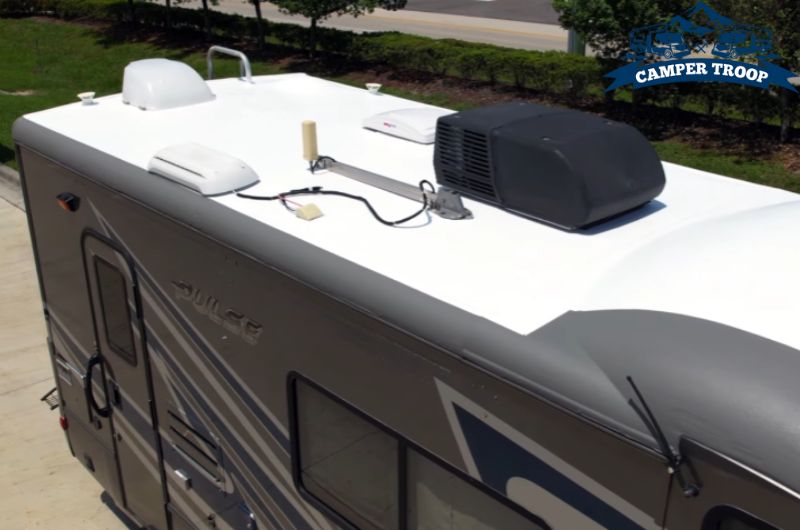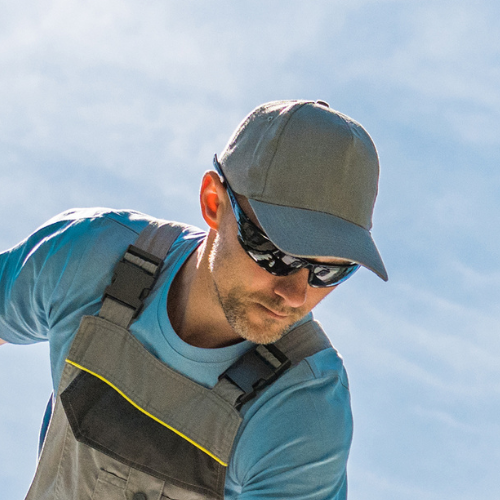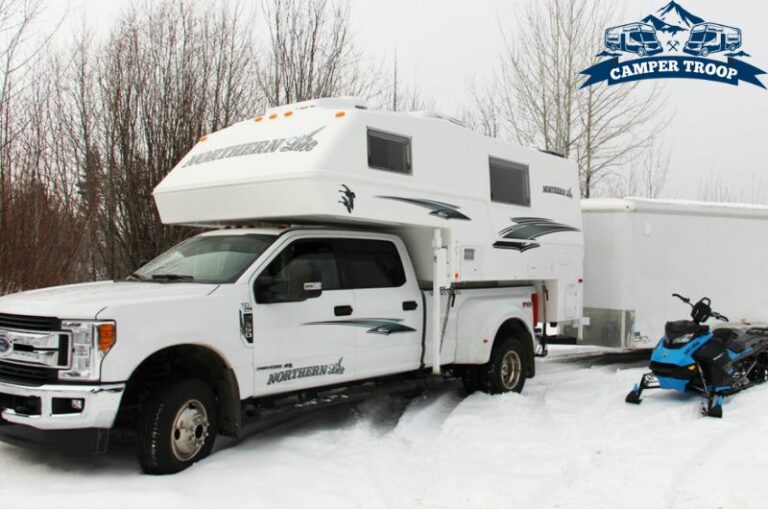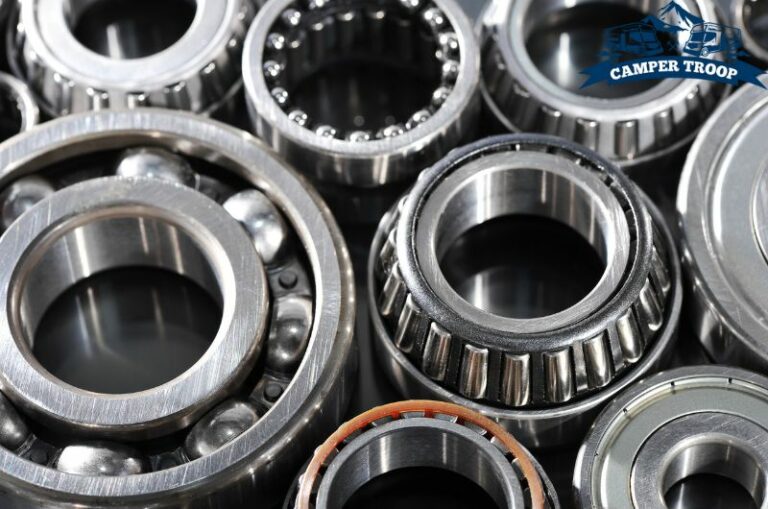13 Common RV Flex Armor Problems – Is It Worth the Price?
RV Flex Armor presents a spray-on solution for safeguarding RV roofs against leaks, cracks, and damages. While widely favored by RV users, the product does entail noteworthy limitations.
Unfortunately, RV Flex Armor encounters certain issues. The problems include issues during AC mounting, poorly aligned corners, affecting roofing materials, etc. Maintenance of RV Flex Armor is also challenging while this spray-on solution is a bit expensive.
This article discusses specific RV Flex Armor problems and offers guidance on their resolution. Let’s get going.

What is RV Flex Armor?
RV Flex Armor is a groundbreaking innovation poised to transform the RV industry. Developed by Flex Armor Industries, this cutting-edge coating offers comprehensive protection for RVs, covering roofs, walls, and floors against the harshest outdoor elements.
It is engineered to combat UV rays, wind, rain, hail, and environmental factors. The coating also excels in insulation and noise reduction.
Comprising multiple layers, the RV Flex Armor system begins with a proprietary membrane covering the RV’s roof, walls, and floor.
Serving as an impenetrable shield, it maintains breathability, preventing condensation. A top coating enhances defense against UV rays, wind, rain, and hail while curbing noise and bolstering insulation.
Exceptionally robust, the RV Flex Armor system endures extreme temperatures (-40°F to +150°F) and boasts waterproof and UV-resistant properties, ideal for extensive RV journeys. Its user-friendly installation requires no specialized tools or expertise.
Overall, RV Flex Armor is a truly innovative and groundbreaking product poised to transform the RV industry.
With remarkable durability and straightforward installation, it delivers exceptional shielding against the sun, wind, rain, and environmental factors. RV Flex Armor is a compelling choice worth exploring for those seeking dependable and enduring RV protection.
RV Flex Armor Problems and Their Possible Solutions:
I enlisted 13 RV Flex Armor problems below with their solutions. Read them carefully and make your trip enjoyable.
1. AC Mounting Issue
Typically, the AC unit needs to be affixed within the roof structure. Bolts through the 14″ opening secure the unit to the roof via a gasket, aligning it with the air conditioning unit.
Solution:
Remove the internal AC bolts and raise the unit off the roof’s gasket.
During Flex Armor roof installation, they disassemble ACs, apply the spray to the 14-inch opening, replace the gasket, and then reactivate the air conditioner.
Read Also: How To Maintain TPO RV Roof? [Complete Guide]
2. Shower Skylight Issues
RV skylights often present several issues, some of which can arise concurrently.
For instance, prolonged sun exposure can cause the exterior plastic of RV skylights to be foggy and yellow and turn brittle over time. In extreme cases, this plastic may crack, leading to leaks.
The inner plastic liner of the RV skylight may also pose problems. Condensation and debris accumulation between the inner liner and outer skylight can occur.
Additionally, if the adhesive securing the transparent section to the opaque outer ring weakens, the inner liner might detach.
Solution:
Before reinstallation, use a damp cloth to clean the outer skylight cover’s inner surface and the liner’s upper half.
Carefully reattach the liner, securing it with a few screws within the aperture.
Cut a small section on the Flex Armor roof for skylight replacement, replace the old skylight, and secure the new one with Dicor sealant.
Subsequently, Flex Armor can restore the roof’s original lifetime warranty for a nominal fee by removing the Dicor and resealing the roof.
3. Affecting Roofing Materials
Primarily affecting certain roofing materials like rubber, EPDM, and TPO roofs, instances of tree branches puncturing RV roofs have been noted.
During travel, overhanging tree branches could puncture the roof, or falling branches may inflict roof damage when parked beneath trees.
Awareness of roof perforation might evade notice unless you detect the sound during the incident or conduct routine roof inspections.
Therefore, consistent roof evaluation is vital for RV owners, mainly focusing on seams and areas treated with sealant.
Solution:
Consult your RV provider for rectifying plywood sheet damage caused by leakage from a roof membrane tear during AC installation.
The provider will explain the situation thoroughly and install equipment partly on bare plywood and partly over the membrane, comprehensively addressing the issues that emerged and ensuring your RV roof’s restoration.
Read Also: 6 Common Problems with Forest River RV Roof [Get To Know All]
4. Poorly Aligned Corner
Due to insufficient sealing surface, the nose cone of Class C RVs might have been stripped of its nose skin at the factory, resulting in an ill-fitting corner trim. Also, the roof membrane corner needed to be more adequately fitted, potentially requiring a specialized caulking approach.
Solution:
Contact the Service authorities, who specialize in roof matters, not vertical corners. Discuss the subpar manufacturing of cab over clearance lights.
They’ll seal and install LED lights, effectively eliminating potential leak paths. Aside from sealed wire, no penetration remains due to roof paint protection.
6. Costly
Like numerous fellow RV owners, the per-foot pricing is steep. My research revealed that engaging a dealer for this task would incur an expense comparable to a standard roof replacement.
Solution:
This financial scenario lacks a solution; acceptance or acclimatization are options.
Enjoy a lifetime material guarantee and reliable service support. Consider this a non-issue when opting for RV Flex Armor, ensuring a superior RV roof experience.
Read Also: What to Do If Your RV Floor Started Creaking? (Prevent Now)
7. Challenging Application Process
An inherent drawback of RV Flex Armor lies in its application process. Incorrect application can lead to air pockets and bubbles forming on the roof, resulting in persistent leaks and subsequent damage.
Solution:
Even minor deflections can lead to significant issues for your RV. It is imperative to exercise utmost caution while applying the RV Flex Armor coating spray to prevent any unforeseen complications.
8. Roof Damage Concerns
Improper pre-application cleaning of the RV roof can lead to inadequate adhesion of RV Flex Armor coating. This can result in premature roof damage and significant leakage.
9. Expansion and Contraction Effects
Similar to other roofing materials, RV Flex Armor expands and contracts with temperature variations. Over time, this can stress the roof, leading to cracks and related issues.
10. Limited Availability and Risks
Locating authorized dealers for the RV Flex Armor application may require travel, and opting for unauthorized products can have severe consequences.
Read Also: Common Propride Hitch Problems: 3 Key Issues & Fixes
11. Aesthetic Limitations
RV Flex Armor coating spray offers restricted color options and lacks customizable designs, which might disappoint those seeking aesthetic enhancements.
12. Color Grading Choice
For those who appreciate simple color grading, RV Flex Armor coating spray is suitable. Otherwise, alternatives might be worth considering.
13. Maintenance
Although RV Flex Armor roof coating demands less upkeep than conventional materials, careful attention remains essential.
Regular cleaning of the RV roof, particularly post-RV Flex Armor application, is vital. This precautionary measure helps prevent problems like mold growth and abrasion.
Read Also: Common Recurve R6 Hitch Problems – Symptoms & Solutions
Is RV Flex Armor Worth the Price?
RV Flex Armor roof coating sprays have drawbacks, yet their benefits justify the investment.
Durable Protection
Designed to shield RV roofs from leaks, cracks, and damage, RV Flex Armor is renowned for its long-lasting defense, often matching the RV’s lifetime.
Water Resistance
Applauded for its water-resistant trait, RV Flex Armor prevents leaks during rainy seasons, safeguards color, and prevents rust.
Tailored Application
RV Flex Armor is precisely applied via a custom-fit process, ensuring comprehensive and uniform coverage, simplifying application, and damage prevention.
UV Resilience
With high UV resistance, RV Flex Armor withstands sun exposure, enhancing summer durability while decreasing energy consumption.
Energy Efficiency
Reflecting sunlight, RV Flex Armor reduces heat buildup, saving energy by reducing AC reliance and fuel consumption.
FAQs.
Do RV Flex Armor coatings develop air pockets or bubbles over time?
If not applied correctly, RV Flex Armor coatings can develop air pockets or bubbles over time. Proper pre-application cleaning and meticulous installation are essential to minimize this risk and ensure the coating remains smooth and durable. Regular maintenance can help prevent such issues from occurring.
What happens if RV Flex Armor is exposed to excessive heat?
Excessive heat exposure may lead to damage or deterioration of the RV Flex Armor. While it is highly resistant to UV radiation and temperature changes, prolonged and intense heat levels could impact its performance, compromising its protective and insulating properties. Regular inspections and preventive measures are advisable to maintain its longevity.
Are there potential drawbacks related to the maintenance of RV Flex Armor?
Yes, there can be drawbacks related to RV Flex Armor maintenance. While it requires less upkeep than traditional materials, neglecting regular cleaning or maintenance could impact its longevity and effectiveness. Routine inspections, proper cleaning, and following manufacturer guidelines are essential to ensure optimal performance and durability.
Final Words
Numerous RV roof manufacturers exist, with RV Flex Armor being a prominent contender. As a pioneer in sprayed RV roof technology, RV Flex Armor offers a comprehensive solution for various scenarios.
However, some issues are associated with RV Flex Armor. Integrating spray polyuria technology with RV construction, Flex Armor establishes a seamless roof, eliminating the need for caulking to prevent water infiltration.
The availability of fully transferable lifetime material and labor warranties effectively addresses many problems, providing reassurance and alleviating concerns.
Read Also: Common Recurve R3 Hitch Problems – Causes & Solutions

Zayan is an accomplished author and a go-to expert for all things RV and camper-related. With a passion for adventure and a knack for problem-solving, he has spent years exploring the open road and fine-tuning his knowledge of recreational vehicles.
Zayan’s writing is a testament to his expertise, offering readers practical solutions to common RV dilemmas. Whether it’s troubleshooting mechanical issues, optimizing space, or planning the perfect road trip, Zayan’s insightful advice and engaging storytelling make him an invaluable resource for both seasoned travelers and newcomers to the world of RVing.




![How To Maintain TPO RV Roof? [Complete Guide]](https://campertroop.com/wp-content/uploads/2023/01/How-To-Maintain-TPO-RV-Roof-768x509.jpg)
![Forest River RV Power Converter Location [Possible 7 Places]](https://campertroop.com/wp-content/uploads/2022/12/Forest-River-RV-Power-Converter-Location-768x509.jpg)